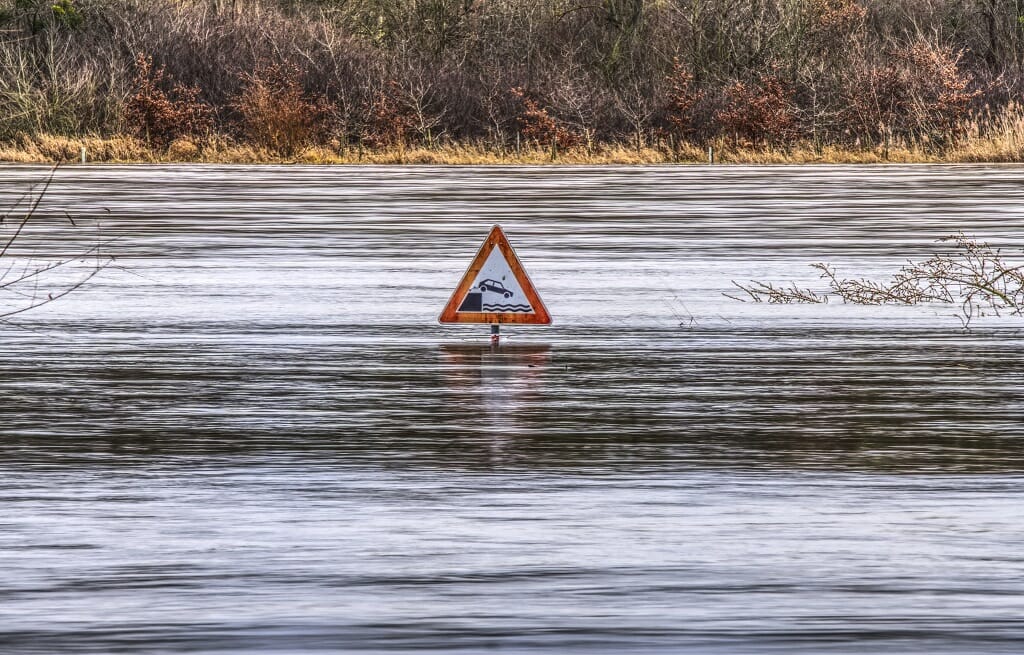As we progress through the UK’s wettest period of the year (Oct-Jan), November has already reminded us of the impact of flooding. When the River Severn and River Avon burst their banks in November 2019, over 70 flood warnings were issued across the UK. While for some this just meant their plans were interrupted, for others it meant damage to homes and a long recovery process.
The pattern of severe flooding we have seen over the past decade has been linked to an increase in extreme weather events. And in line with this, the Environment Agency has warned that intense flooding will become more frequent in the UK due to climate change.
Any period of prolonged rainfall tends to bring concerns over flooding and the thoughts of council decision-makers turn to the state of their highway drainage assets. All year long these assets play a key role in draining water quickly and easily from the carriageway and pavements, thereby enabling the public to use them safely, as well as preventing ongoing deterioration. So, it is vital that these assets are kept in good working order.
Putting the Basics in Place
Most local authorities understand the importance of optimising the way they are managing their drainage assets but it is often difficult for them to achieve this. The Highways Management Efficiency Programme (HMEP) Guidance on the Management of Highway Drainage Assets (November 2012) highlights the importance of ‘Defining the Asset’.
In our experience at Yotta, many local authorities across the UK still struggle with this. Often, they do not have specific drainage asset databases. Consequently, they often lack a good understanding of what drainage assets they have in the field or the condition of these assets. This lack of insight means that when it comes to maintaining their assets, local authorities are typically reduced to employing a reactive approach. A reactive maintenance approach increases the risk of accidents as a result of flooding and typically costs more than proactive maintenance.
Local authorities are aware that this situation needs to change. They need to better understand what assets they have at their disposal and, beyond that, manage them more efficiently. However, with budgets remaining tight, it is also imperative to do this cost-effectively.
Defining an approach is a key first step. One aim of the HMEP Guidance is to “identify good practice through proactive engagement to demonstrate how local authorities may best use data to manage highway drainage systems efficiently and effectively”. And the guidance goes on to state that: “in order to manage drainage systems cost-effectively, it is necessary for local highway authorities to have a robust drainage asset management strategy.”
Part of this is simply about gathering the right information. Using our own visualised asset management software, Horizons, allows councils to categorise their assets into homogenous groups and subgroups. Decision-makers can review details of road hierarchies, for example, to work out which roads are more heavily used or have particular strategic importance. They can also bring in data from external sources, such as flood maps from the Environment Agency, for example, to work out where flooding is likely to have the most significant impact on the road network. Combined with analysis of flooding hotspots, accident data and siltation levels, a risk matrix approach can be implemented. All this information helps to establish the priorities for drainage maintenance.
Looking Ahead
Every council should be looking to put this kind of strategic asset management approach in place. However, the latest technology enables them to move beyond this base capability and start planning a more proactive maintenance approach. Connected asset management tools like our own Alloy offer local authorities the potential to start leveraging the Internet of Things (IoT) to deliver this capability. Today, most councils pay for contractors to empty the gulley pots at predefined intervals – whether they require emptying or not.
The use of connected devices has the potential to save councils significant sums while improving public safety at the same time. By placing sensors in drainage pots in critical locations, silt build-up can be monitored and councils can immediately see which gullies need attention rather than having to wait for annual checks. This saves money and helps reduce flood risk by enabling problematic drains to be seen immediately and the whole drainage network to be better maintained.
A connected asset management approach also enables councils to start linking asset classes and begin to see how issues with drainage and the resultant flooding can start to affect other areas of the highways network. Local authorities could, for example, start to see how flooding is accelerating deterioration rates of highway pavements, and use this knowledge to take preventative action. By extension, drainage and flooding information can start to be fed into the wider highway strategic planning process.
While it may be exciting to speculate about the future for drainage asset maintenance, it is nevertheless crucial to address the current need. It is always important to remember here that systems need to be simple and easy to maintain. Technology should be used to provide efficiency and reduce risk but not create additional complexity and maintenance issues. For most councils, a stepped approach will be the right approach, concentrating on getting the basics right first before building on this to deliver a more robust, proactive and future-looking approach over time.



